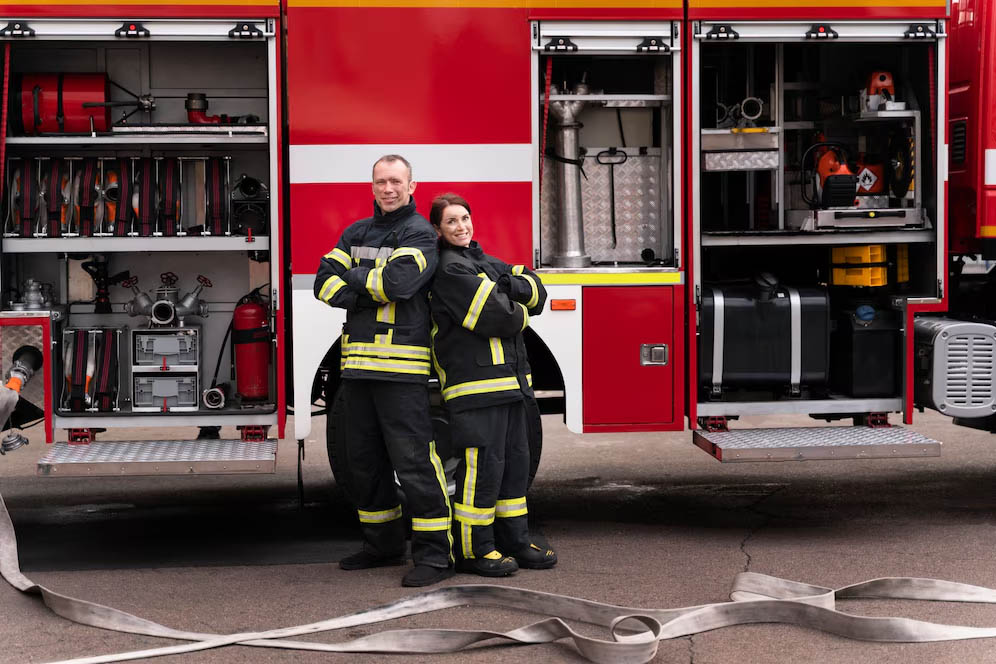Physical Address
304 North Cardinal St.
Dorchester Center, MA 02124
Physical Address
304 North Cardinal St.
Dorchester Center, MA 02124

Learn the exact steps to pursue a rewarding firefighting career in Ontario. From training requirements to application tips, this guide covers everything you need to know for 2025.
Firefighting in Ontario offers more than just a job—it’s a calling that combines service, excitement, and stability. As one of the most respected professions in Canada, firefighters enjoy competitive salaries (averaging $70,000-$100,000+ annually for full-time positions), excellent benefits, and a strong pension plan.
Ontario’s fire services are evolving rapidly, with growing demands for specialized skills in areas like hazardous materials management, technical rescue, and medical response. This creates diverse career paths beyond traditional firefighting roles.
Did you know? Ontario employs over 11,000 professional firefighters across the province, with thousands more serving as volunteer firefighters in smaller communities.
If you’re wondering how to become a firefighter in Ontario, you’ll need determination, physical fitness, and the right training. Let’s break down the process into clear, actionable steps.
Before pursuing firefighter training in Ontario, ensure you meet these basic requirements:
Many successful candidates also have post-secondary education in fire science, paramedic studies, or related fields, though this isn’t always mandatory.
Firefighting is physically demanding, requiring candidates to meet strict medical and fitness standards:
The CPAT includes challenging tasks like stair climbing with weight, hose dragging, equipment carrying, ladder raising, forcible entry simulation, search exercises, rescue drags, and ceiling breach tests—all while wearing a 50-pound vest.
The Ontario Fire College is central to firefighter training in Ontario, offering specialized courses and certification programs. While the main campus in Gravenhurst closed in 2021, the OFC continues to deliver training through Regional Training Centres across the province.
Key OFC programs include:
Many municipalities require NFPA 1001 certification (Firefighter Levels I and II) as a minimum qualification for applicants.
Several Ontario municipalities operate their own fire academies, offering pre-service and in-service training:
Additionally, many community colleges offer pre-service firefighter programs, including:
Did you know? Volunteer firefighter positions in Ontario often provide paid training and can be an excellent pathway to full-time employment while serving your community.

The competition for firefighter positions in Ontario is intense. The application process typically includes:
Prepare to discuss your motivations, understanding of the profession, community involvement, and how you handle stress and teamwork scenarios.
Beyond written and interview components, expect practical evaluations:
Most Ontario fire departments post job openings on their municipal websites and platforms like Ontario Municipal Jobs.
Becoming a firefighter in Ontario requires financial investment and time:
Costs:
Typical Timeline:
Financial Assistance:
For those pursuing volunteer firefighter positions in Ontario, many departments cover training costs once you’re accepted into their program.
To maximize your chances of becoming a firefighter in Ontario:
Remember that how to become a firefighter in Ontario is not just about meeting minimum requirements but standing out in a competitive field.
How long does it take to become a firefighter in Ontario? The process typically takes 2-3 years from starting education to securing a position. This includes 1-2 years for pre-service training and potentially 6-12 months for the application and hiring process.
What is the age limit to become a firefighter in Ontario? There is no upper age limit, but you must be at least 18 years old. Most successful candidates are between 25-35 when hired, having gained relevant education and experience.
Do I need a college degree for firefighter training in Ontario? While not always mandatory, a pre-service firefighter program or related post-secondary education significantly increases your chances of being hired in competitive Ontario departments.
How can I find volunteer firefighter opportunities in Ontario? Contact smaller municipal fire departments directly or check their websites for volunteer recruitment periods. Many rural and suburban communities rely on volunteer firefighters.
What physical standards must I meet to become an Ontario firefighter? You’ll need to pass the Candidate Physical Ability Test (CPAT) or similar assessment, which tests strength, endurance, and agility through job-specific tasks while wearing weighted equipment.
Can women become firefighters in Ontario? Absolutely. Ontario fire services actively encourage women to apply, with many departments offering specific recruitment initiatives and mentorship programs for female candidates.
Is EMR or paramedic training required for Ontario firefighters? While not always mandatory, medical response training is highly valuable. Many departments require at minimum First Aid and CPR certification, with advanced medical training giving candidates a competitive edge.
The path to becoming a firefighter in Ontario requires dedication, preparation, and persistence. While the process is demanding, the rewards of this honorable profession make it well worth the effort. From the comprehensive training at the Ontario Fire College to the rigorous selection process, each step prepares you for an exciting career saving lives and protecting communities.
Ready to take the next step toward becoming a firefighter in Ontario? Research pre-service programs at your local college or contact your municipal fire department about volunteer opportunities. The journey to your firefighting career starts today!
Share this guide with anyone you know who dreams of firefighting in Ontario. Have questions about how to become a firefighter in Ontario? Leave a comment below!